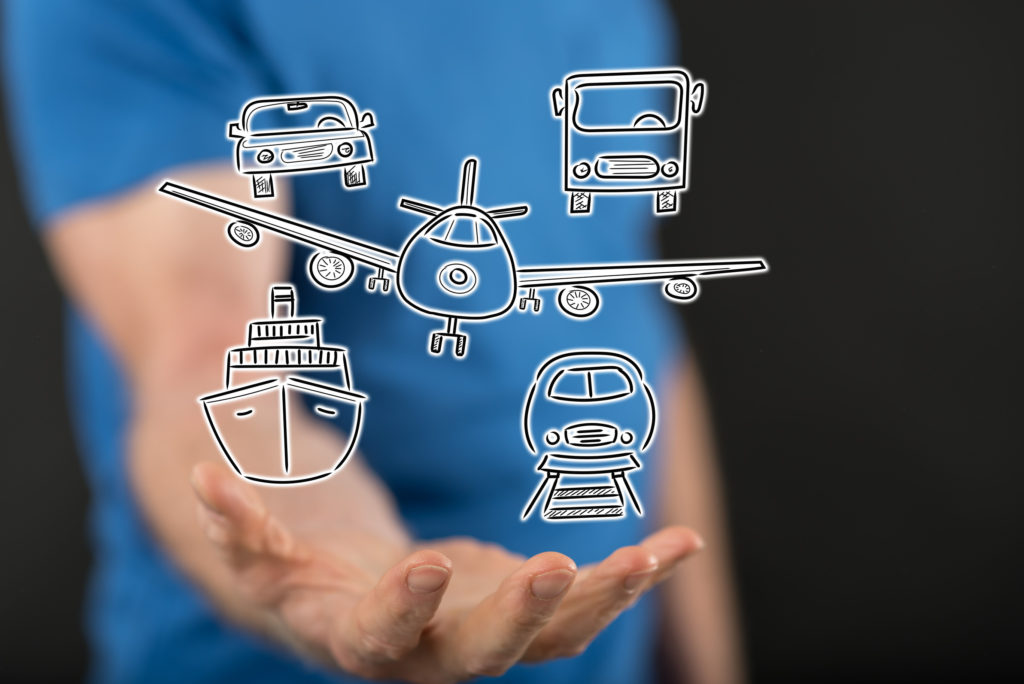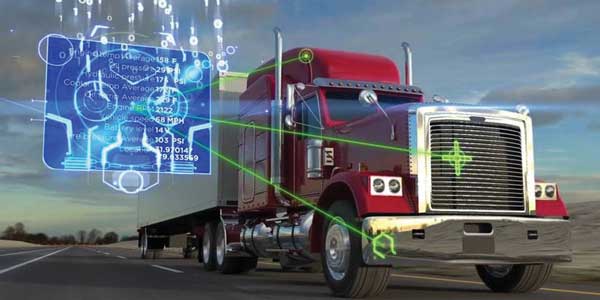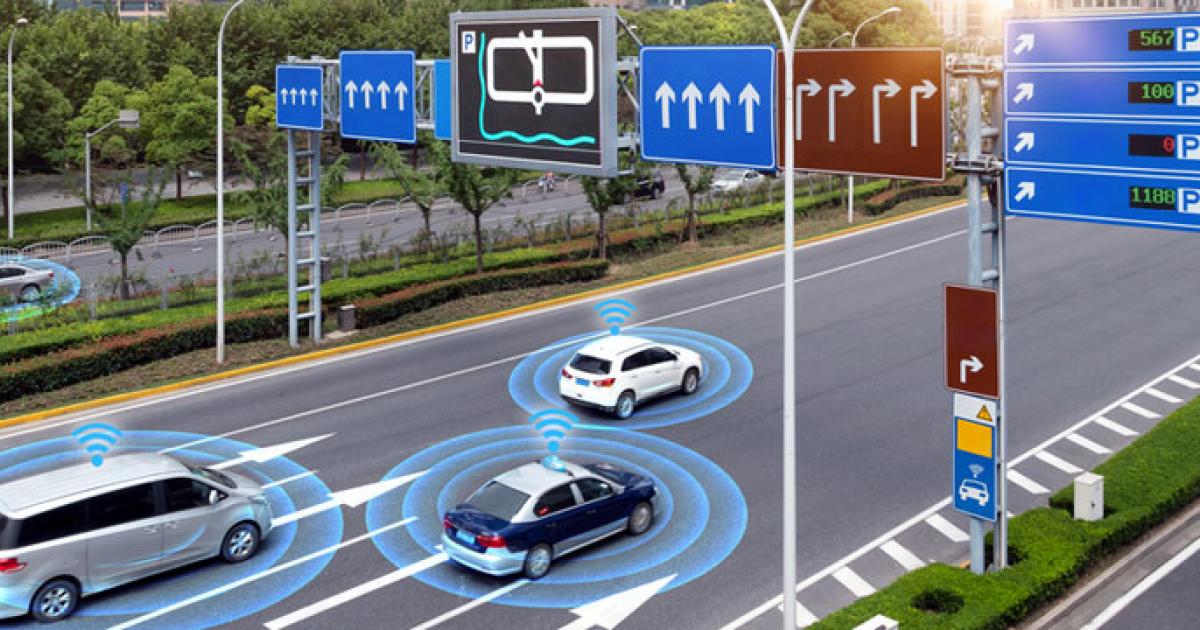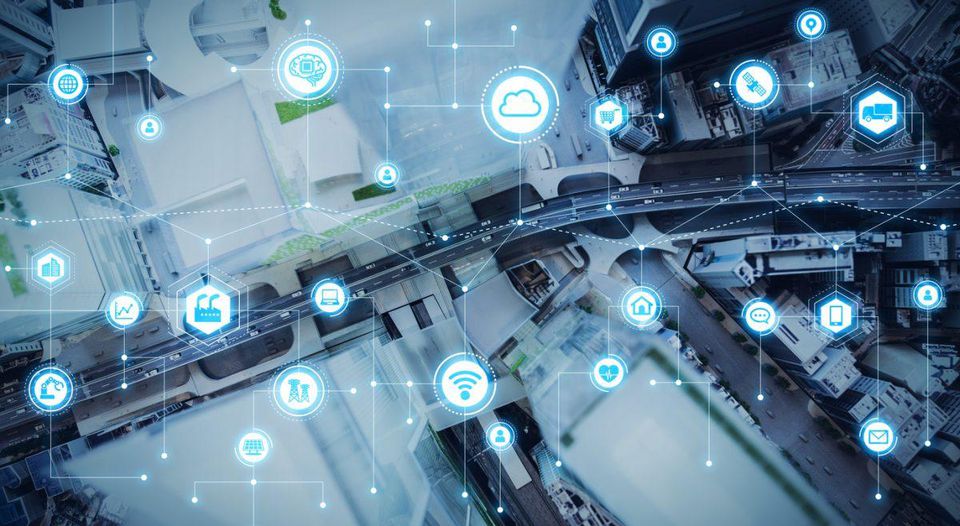How the IoT is Improving Transportation and Logistics
The Internet of things in transportation and logistics is able to fully renovate these industries ✓ Here is where IoT can be useful.
In the 2010s, the Internet has made a qualitative leap forward, and the end of the decade now offers revolutionary digital solutions that may become indispensable for every business in the future. One of these new developments is the Internet of things (IoT), without which it will be impossible to imagine some areas in the next five to ten years - logistics custom software development solutions especially.
The essence of the Internet of things is not just a kettle that boils water five minutes before your arrival or a refrigerator that automatically orders food and knows about your preferences.
IoT is a well-established interaction of gadgets which will significantly improve the efficiency of production and transportation.
Let's take a more detailed look into how IoT technologies in transport and logistics are changing the industry right now, and what solutions can be implemented in the near future.

The State of IoT Services in Transportation and Logistics, and How IoT Technology Can Boost the Market
Outdated technologies lead to significant losses of products, and consequently, to losses for all the links in the supply chain, from the manufacturer to the supplier. Intel conducted a study and found that 30% of products don’t reach the end user.
They come into disrepair during transportation, are lost, or get destroyed for other reasons. Because of this, the following negative phenomena often occur:
- The manufacturer receives less profit if the number of defects in the party is greater than it was stipulated by the contract;
- Transportation companies and organizations that provide shipment, transshipment, and storage of cargo face legal claims from both the sender and the recipient of the cargo;
- The retailer is forced to raise product prices to compensate for the rejected items;
- The end user has to buy products from the retailer at a higher cost, or look for a seller offering similar products at more favorable prices.

How IoT is transforming transportation
Despite all the problems, the logistics market continues to develop. The volume of freight and logistics services, according to a study by Techavio, will have increased by 30% by 2020. This will continue as the number of consumers grows steadily, and companies will need to ensure timely, uninterrupted delivery to meet their needs and avoid the insurance services or price spikes due to excess or lack of products in different time intervals.
There are even more opportunities for businesses connected with logistics. Services are being developed that open up new opportunities for supply chain control, increased security, delivery productivity, reduced resource consumption, etc.
Internet of Things in transportation brings a number of advantages. These include:
- Optimizing the use of company resources: personnel, machines, and equipment are used more efficiently and economically, which reduces costs;
- Decreasing the significance of human error. Unfortunately, humans cause most accidents. Crashes, theft, counterfeiting, and substitution of products during delivery – all these problems hit not only on income but also on reputation. IoT will improve the safety of delivery, and create a new jobs market;
- Transportation control. With IoT services in transportation, companies will not only know where a particular cargo is and set the delivery time but will also be able to monitor the cargo condition and change the parameters depending on the current situation.
These are only the main advantages of IoT integration into logistics. In fact, there are much more to be discovered. Thanks to IoT trends in logistics, the industry has received tremendous development in recent years. Statista experts predict that companies will invest $40 billion in logistics technologies by 2020, and these investments can really pay off.

Top Applications of IoT in Logistics
We are at the dawn of the Internet of Things revolution. The industry has huge potential, from all the objects that had the ability to be connected to the Internet to obtain useful data; in fact, only one percent was connected in 2015, according to DHL and Cisco report. But even this one percent has strongly changed the industry, and in particular, the sphere of logistics. There are hundreds of projects, applications and technologies that significantly influence these businesses.
Location management
The IBM and Colombian logistics operator AOS have implemented a platform that uses the Internet of Things to track and retrieve information about each vehicle that transports goods. IBM Blockchain, Watson IoT, and IBM Cloud technologies were used to develop the system.
Special IoT sensors are mounted on the AOS trucks to assign RFID tags. Each label contains information about the carrier, the cargo, the location at a particular time, as well as the availability of space in the truck - this is how IoT is improving transportation.
The information is recorded on the blockchain, which allows the company to get the necessary information quickly, at the same time providing reliable protection against unauthorized access. Also, according to IBM experts, this solution makes it possible to reduce the impact of the human factor and significantly speed up the process of information processing.
Inventory tracking
During the inventory control of goods, there are also many issues, especially in large stores or warehouses. Therefore, this area is one of the priorities for IoT. One of the ways to facilitate inventory in large areas is the Smart Shelf system. With its help, a system of “smart shelves” is created and the product search takes only a few seconds.
Smart Shelf involves equipping shelves in supermarkets or warehouses with RFID tags with weight sensors. The system also includes readers that scan products both on the display and directly on the shelf. Thus, using only one application, the manager knows exactly where the product is and what its weight is, which allows them to count how many units are left in stock.

Supply chain management monitoring
The American cellular giant AT&T has launched its own supply chain management platform. Services such as IBM Blockchain and Microsoft Azure were used to develop it.
AT&T's supply chain management system provides control from the factory to the end user. At the stage of production, with the help of the service, you can control the origin of materials, the quality of their production, and track the shipment from the warehouses of the enterprise to the end user.
A retailer will be able to constantly monitor the availability of goods in its warehouse using this system. The AT&T system is based on the blockchain, which also allows to confirm the authenticity of the goods. All batch information is entered into the blocks which are impossible to change or remove. The recipient can get the necessary information at any time.
Drone-based delivery
Drones have been actively introduced into the business since 2016. Such solutions have been evaluated so highly that startups started developing the Internet of things for drones, which even received a separate name – Internet of Drones.
One of the companies that have achieved the greatest success in this industry is the world-famous logistics company DHL. The German carrier, together with the Chinese manufacturer of drones EHang, developed a new generation drone that delivers small parcels by air. According to representatives of the companies, this solution is fully automated.
The drone has a GPS navigator where it gets real-time coordinates. The drone independently picks up cargo from special yellow lockers, and each parcel has a label to whom and where to deliver. Optical sensors installed on drones make orientation on the ground more effective. Therefore, the drone will not have problems finding the right apartment.
The drones also use special protection systems that prevent anyone from stealing the cargo. Each customer receives a unique code on their smartphone, which must be entered in order for the drone to complete the shipment. In addition, the drone uses a facial recognition system so it will not make a shipment to a fraudster who learned the code.
Improved traffic management
Smats offers a solution for optimizing traffic with Smats Signal Optimization. This system is “smart traffic lights” for artificial intelligence which are able to organize the most effective movement, depending on the traffic that is observed at a particular time at a particular point.
The essence of the technology is in installing a special sensor, TrafficXHub, at the largest and busiest intersections in the city. Sensors receive information about movement in different areas and automatically determine the frequency at which signals should change at traffic lights.
Reduced energy use for transportation
Reducing energy consumption is particularly important for the delivery of goods by sea. The main costs in this area fall on fuel. According to The Geography of Transport Systems, it accounts for up to 50% of the operational cost of the vessel.
Orange has developed a solution called Maritime VSAT, which saves up to 10% of fuel. The basic control system includes level sensors, fuel flow sensors, and GPS. Thus, it is possible to track how much diesel a particular ship consumes over a certain distance. The information from the sensors is transmitted to the onboard computer and then sent to the cloud service of data storage and processing.
Specialists can then open the monitoring program and get all the necessary information. If the expense increases for any reason, the vessel is sent for preventive maintenance. In addition, such a system will prevent theft of fuel by the crew.
Increasing driver safety
Caterpillar has introduced a new driver safety system in its vehicles, in which the Internet of things plays a key role. Each car owned by the company is equipped with special “smart” cameras that record the driver's face during the trip.
The essence of the technology is to determine the level of driver fatigue in terms of pupil size and blinking frequency. If the system detects a critical level of fatigue, it notifies the driver by means of light or sound signals. The cameras use infrared radiation, so they can monitor the driver's condition and performance in the dark or through sunglasses.
Our Experience
At Ardas IT, we do high-end saas based product development in the transportation and logistics industry. Despite the fact that they don’t refer to IoT directly, they represent a confident step towards the development of the transportation industry and the introduction of the Internet of Things in the logistics industry. Our specialists have developed two projects that are already being successfully implemented in the logistics industry.
Freight Management App
Freight Management App is a mobile application that will improve the efficiency of transportation management. During the implementation of the service, the team developed a control panel, an internal messenger, a control board for system participants, and a number of other useful functions.
The system was developed completely from scratch. It is suitable for all participants of transportation, from brokers to drivers and forwarders. With its help, a company can track the loading and unloading of goods, establish a feedback system, maintain communication at all levels, and set tasks for drivers. The application is also equipped with photo and document recognition service. All information is stored in its own database.
Logistic Network App
This app has been developed specifically for logistics companies. The idea is to create a professional network of organizations working in the field of transportation around the world.
The Logistic Network App should become an analogue of the social network for professionals from the logistics industry, with the help of which it will be possible to quickly communicate with other companies and agents, to ensure fast forwarding of documents, and more. In this network, any visitor will be able to find a suitable company for transportation.
The Logistic Network App allows users to create a network of professional contacts and be in touch with partners constantly. With the messenger, the user is able to quickly convey the necessary information and get an answer. The application provides a system of freight evaluation, as well as a feedback service that allows customers to leave feedback on companies.
Conclusion
The Internet of Things in logistics is of paramount importance, and over the years, the weight of the technology in the industry will only grow. In fact, IoT is not only being implemented in transportation, but in other areas of our lives, and this is a growing trend.
Companies that see the prospects of the Internet of Things begin to implement the relevant developments have the opportunity not only to optimize costs but also to improve the efficiency of transportation, which in turn will provide an influx of new customers and revenue.
Using Ardas IT services, you will make your organization more progressive. IoT services will improve communication at all levels and allow you to control the processes of loading, delivery, shipment of goods, etc. With Ardas IT, you can take a qualitative step forward in the ratio of price and quality of cargo transportation, which will definitely be noticed by your potential customers!